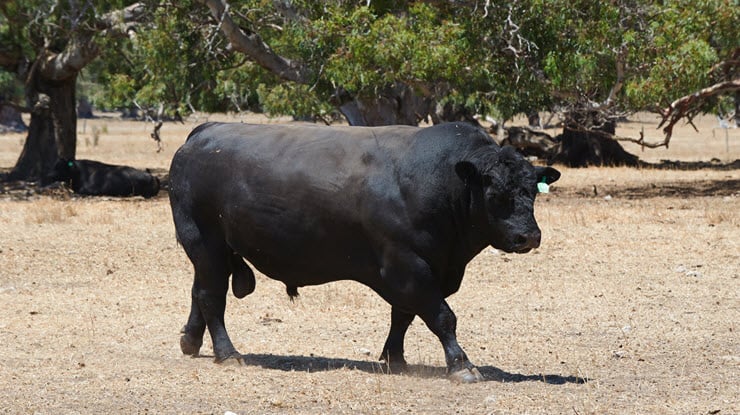Selection in the south
25 July 2019

Be clear on what drives profit in your business and match your bull selection to those profit drivers.
According to MLA’s Genetics Program Manager Hamish Chandler, this should underpin how every producer uses genetic selection tools such as Estimated Breeding Values (EBVs) and indexes.
“What drives profitability in your business should be naturally linked to your breeding objective,” he said.
“Traditionally, producers consider a whole range of traits and attributes when buying bulls, but we need to make sure those attributes clearly relate back to what producers want to achieve in their business.
“It’s important we join the dots between what we want to improve and what traits we need when selecting replacement bulls.”
Hamish said EBVs are an essential part of the selection process.
“There are things, other than the genes a bull carries, that influence what he looks like on sale day,” he said.
“Breeding values are important because we can rank bulls on their genetic attributes rather than on how good a season they have had.”
Hamish said in southern production systems, where good reproduction rates are generally achieved, producers should consider other profit drivers.
“If you’re selling lighter‑weight calves to restockers, fast early growth and moderate cow size will be considerations, whereas suppliers to feedlots and the Japanese ox market will require more emphasis on eating quality traits such as intramuscular fat,” he said.
Before attending a bull sale, Hamish recommends looking at breeding values and indexes first, and then assessing bulls that fit the criteria for structure and other attributes at the sale.
“Indexes are useful for ranking bulls in terms of value in achieving a breeding objective,” he said.
“If you have several candidates of similar index value, then you need to consider individual breeding values – such as birth weight, scrotal circumference and intramuscular fat – and weigh up their worth to you, as well as considering other traits not in the index such as structure and temperament.”


